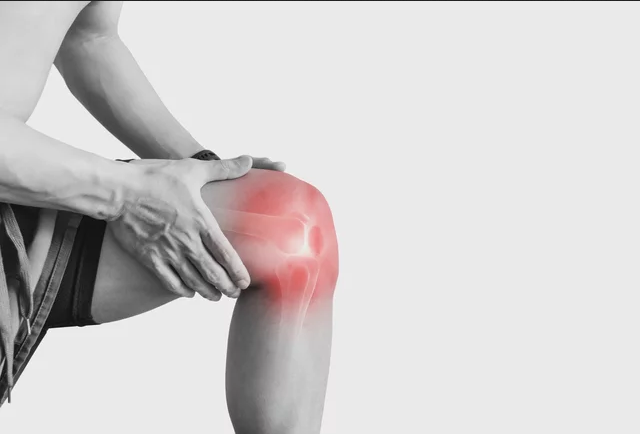
A recent Nutrients
journal study used bibliometrics to identify how nutrition can modulate the relationship between gut microbiota and chronic pain.
Study: Global Trends in Research of Pain–Gut-Microbiota Relationship and How Nutrition Can Modulate This Link
. Image Credit: Sasin Paraksa / Shutterstock.com
Pain is an unpleasant sensory experience and is subjective in nature. Chronic pain includes psychogenic, pathological, and functional pain, which can adversely impact the quality of life.
Several studies have indicated that peripheral organs, including the muscles, joints, skin, bones, and visceral tissues, contain an abundance of nociceptors. However, the underlying molecular mechanism of chronic pain remains unclear, thus preventing the development of effective therapeutic measures to manage chronic pain.
Chronic pain is treated based on its type, such as inflammatory, visceral, headache, and neuropathic pain, with treatment of certain types of chronic pain being more challenging than others. For example, visceral pain linked to Crohn’s disease (CD) is more challenging to treat, with most pain interventions such as yoga, kefir diet, acupuncture
, and the olorinab drug being ineffective.
Several studies have shown that microorganisms present in the gut are linked with many physiological functions, including immune and metabolic functions. Furthermore, the gut microbiome maintains the body’s overall health by conserving gut barrier integrity, energy regulation, nutrition storage, and brain development.
Recently, researchers have become increasingly interested in evaluating the relationship between pain and gut microbiome. These studies have indicated that microbes that colonize the gastrointestinal tract can facilitate bidirectional communication between the gut microbes and pain.
This communication occurs through the interactions between bacterial metabolites, such as short-chain fatty acids (SCFAs), tryptophan, and bile acids (BAs). The major pathways that link gut microbiome and pain are endocrine, immune, and neural pathways.
Nutrition is vital in maintaining the body’s normal physiological, immune, and biochemical functions. Inadequate nutrition may lead to impaired metabolism, growth, and repair.
The gut microbiome metabolizes indigestible macronutrients from the diet and can change BAs, SCFAs, and tryptophan levels. These metabolites influence the functional receptors or a signaling pathway linked to chronic pain conditions.
The current study performed a bibliometric analysis to understand how nutrition influences the association between gut microbiome and chronic pain. All relevant publications between 2003 and 2022 were obtained from the Web of Science Core Collection (WoSCC).
Importantly, the current study only considered “pain” and not “discomfort”. Even though both pain and discomfort have related sensations, there are many differences between these two experiences.
A total of 1,551 articles on the relationship between pain and gut microbiota were found in the initial search, 122 of which were linked to nutrition. Commercialization of the third-generation sequencing technology played a significant role in a rapid increase in these studies.
The United States, followed by China and Italy, were found to be the key driving force of research related to pain-gut microbiota nutrition. Notably, a low rate of international collaboration was observed, as only 1.34% of authors collaborated with each other more than three times.
Only a few research articles on the association between pain–gut microbiota–and nutrition were found, thus implying that manipulation of gut microbiota using diet to modulate pain is not the primary research focus worldwide. However, a limited number of real-world studies have shown the effectiveness of optimal nutrition in regulating gut microbiota, which alleviates chronic pain.
Both probiotics and prebiotics could be used to manage chronic pain by targeting gut microbiota. Probiotics, such asBifidobacterium, Akkermansia muciniphila, andLactobacillusgenera, are commonly used for clinical purposes, including pain improvement.
Likewise, one mouse model revealed that probiotic therapy attenuates antibiotic-induced visceral hypersensitivity by altering sensory neurotransmitter content in the colon, whereas another study revealed that SCFAs alleviate chronic pain.
Improvement of abdominal pain
was linked with an increased abundance ofA. muciniphilain irritable bowel syndrome (IBS) patients through fecal microbiota transplantation (FMT). Prebiotics only or in combination with probiotics could be used to improve pain that is linked to many diseases. More research is needed to better understand the clinical significance of FMT for pain improvement.
The current study analyzed data from a single database, which can be rectified in the future by considering multiple databases. There remains a need for more high-quality, mechanistic studies to elucidate the crosstalk between gut microbiota, nutrition, and pain. However, the evidence documented in this study will help physicians and researchers study the gut-microbiota-pain-nutrition axis for clinical applications.